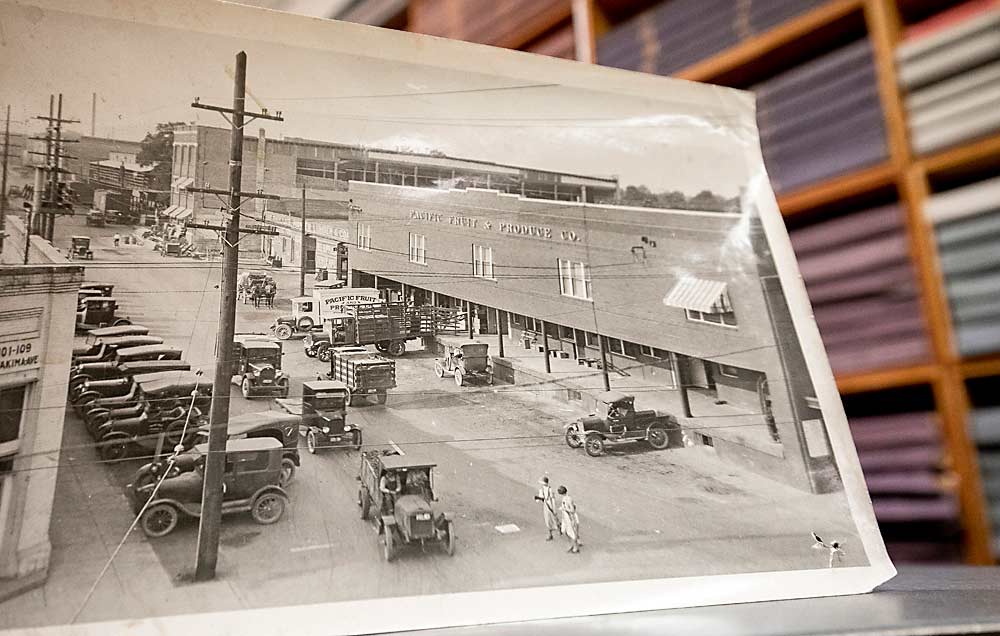
Editor’s note: The story has been corrected to say Bloxom remembers Warren among the family names who once packed fruit on Fruit Row, not Warner.
A group of history buffs aims to give Yakima, Washington’s historic downtown fruit shipping industry some modern kudos.
A proposal by a couple of property owners and the city would place a four-block section of First Avenue, nicknamed Fruit Row, on the National Register of Historic Places.
The strip is home to about two dozen properties, most of them at one point bustling fruit warehouses through which flowed the railroad shipments of apples, cherries and pears that built the economy of Central Washington.
As fruit shipments throughout the 20th century shifted from railcar to trucks, many fruit companies have moved out of Fruit Row to freestanding facilities farther from the city center. Several Fruit Row buildings are vacant or house other businesses, including government offices, a pollen distributor and hop shippers. (The Yakima Valley also is one of the leading hop-producing regions in the world.)
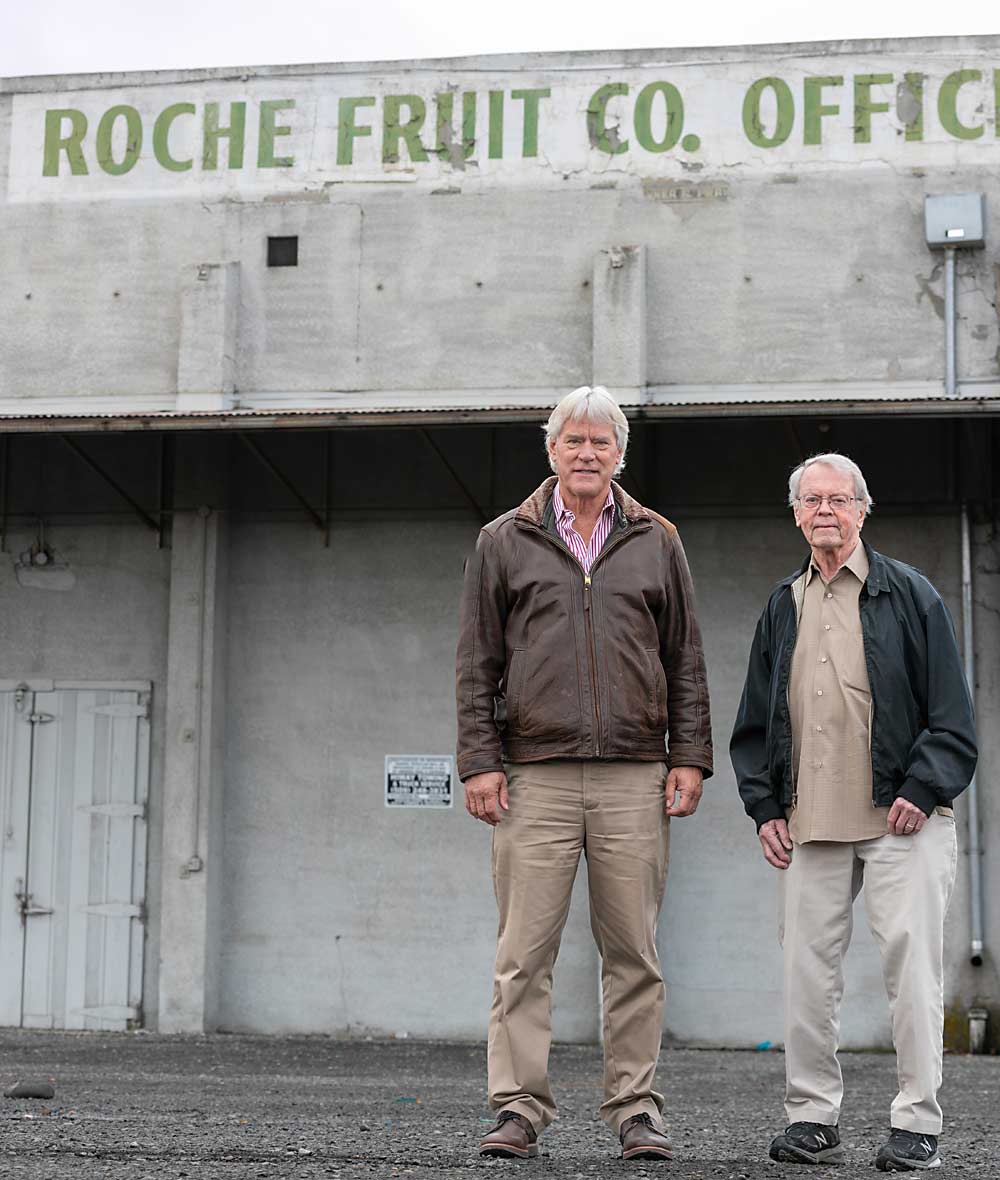
However, Fruit Row still includes one active fruit packer, Roche Fruit, which has expanded over the years by gradually purchasing space from other companies as they moved out.
“I’m kind of the last man standing here,” said Michael Roche, president of Roche Fruit and the fourth-generation owner of the family business that was established around 1910.
Roche Fruit technically falls just outside the proposed boundaries and features buildings with modern, concrete, tilt-up walls. But they operate adjacent to the same railroad tracks that blazed the trail more than a century ago.
By the time Roche, now 53, began working for his family’s company in the 1980s, most shipments were by truck, but he remembers loading the occasional railcar, stacking 40-pound boxes by hand.
The location works for his company, but there’s not enough room in the downtown area for more at the scale required of modern production.
“If you’re starting a fruit company from scratch today, you certainly wouldn’t pick First Avenue,” he said.
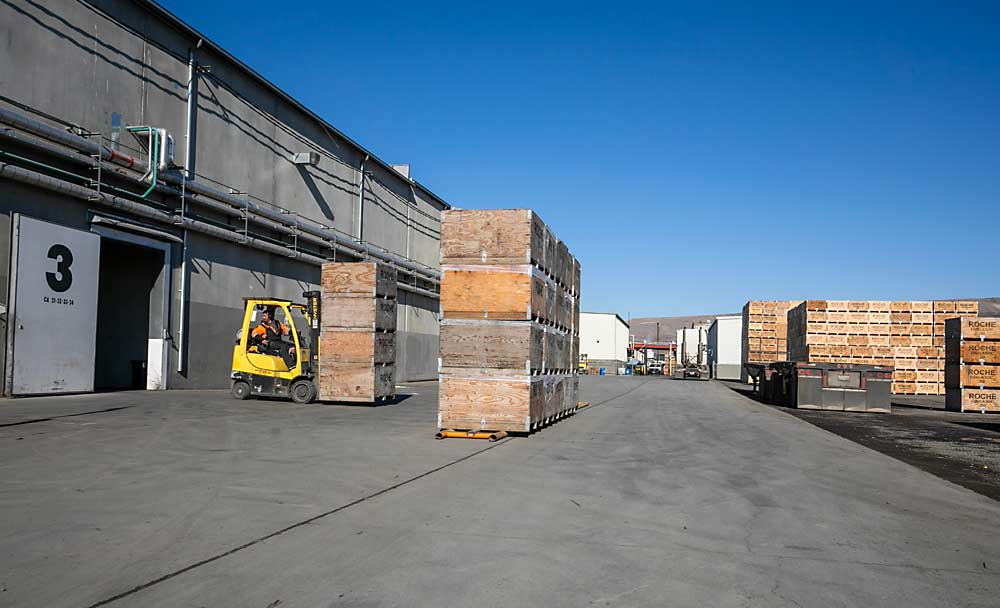
A hearing on the proposed historic designation, with the full name Fruit and Produce Row Historic District, was scheduled with the Washington State Department of Archaeology and Historic Preservation in December. Then, the National Park Service must approve. If they do, property owners in the area would be eligible for tax breaks of 10 or 20 percent on capital investment but would face no restriction on development, said Albert Miller, assistant planner for the city of Yakima.
Railroads lead the way
The Fruit Row warehouse district is a product of railroad influence on the American West at the turn of the 20th century.
Looking for a high-value crop that would hold up well during cross-continental transport, railroad companies recruited settlers to grow apples, with the promise of ample land and new irrigation systems, according to Amanda Van Lanen, author of The Washington Apple: Orchards and the Development of Industrial Agriculture.
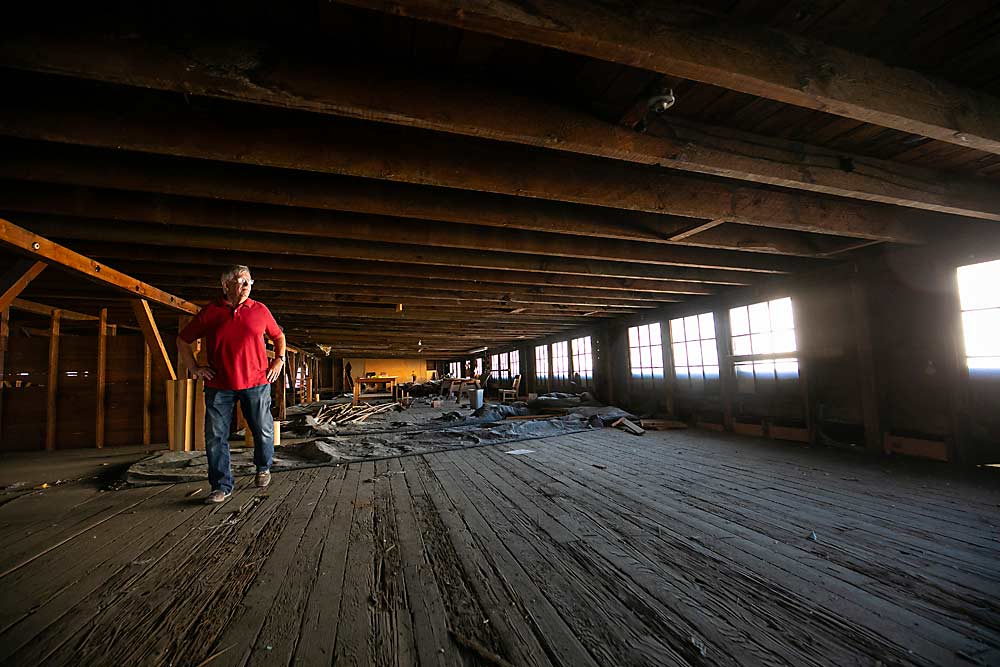
“Railroads were looking systemwide,” said Van Lanen, a Lewis-Clark State College history professor in Lewiston, Idaho, who earned her doctorate from Washington State University. “They wanted people to grow a crop that had good return. Apples were a perfect fit.”
From the get-go, growers reluctantly collectivized in associations, fruit corporations and cooperatives to overcome the extra cost of getting their fruit to market, compared to their competitors in New York and Virginia, said Van Lanen. The railroads leased land to the fruit companies in Yakima, Wenatchee and other Washington locations, where warehouses elevated their first floors to the level of railcars, for easy loading. Even today, some industry statisticians report crop volume in 1,000-box units, roughly what a railcar can hold.
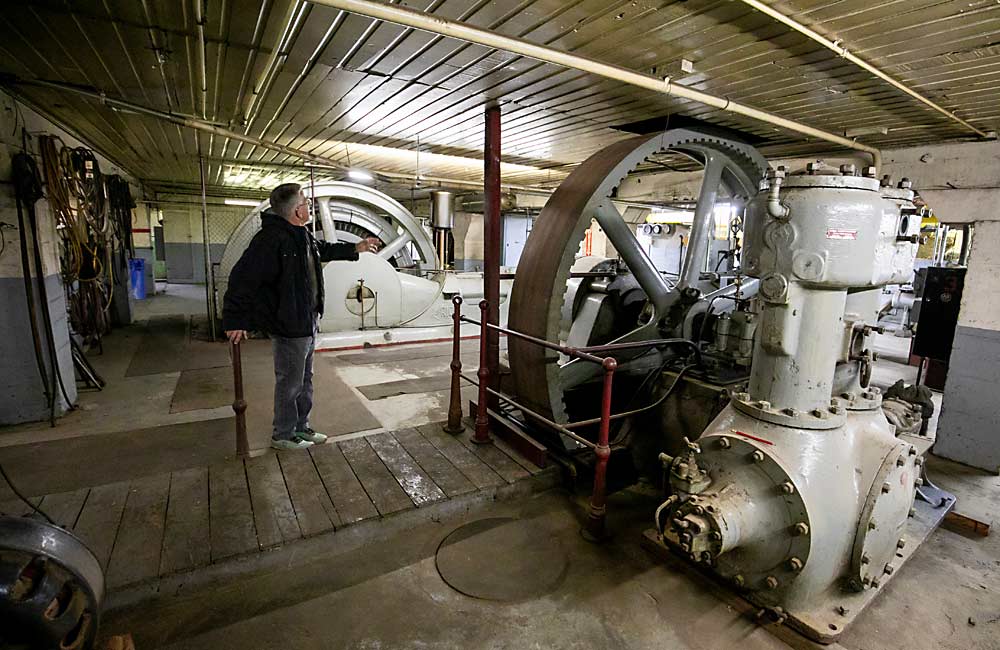
For most of the 1900s, the fruit industry had a contentious relationship with the rail companies, complaining about quality control during transport. For their part, fruit companies congregated to write quality standards and built refrigerated storage and controlled atmosphere facilities by the 1960s.
After the 1970s energy crisis, fruit companies began to switch from railcars to trucks, allowing them to seek larger spaces away from Fruit Row.
Rick Plath, now the president of Washington Fruit and Produce Co., began working at the family company in 1975, when it was on Fruit Row. Most of the shipments were by truck then, though a few buyers still preferred rail, which cost about $1 less per box.
Eventually, Fruit Row became too crowded for Washington Fruit and Roche Fruit, partners in a marketing group. In 2010, Washington Fruit began building on North River Road, a few miles north of Fruit Row, and selling the Fruit Row properties to Roche.
“It wasn’t big enough for us and Roche to be in the same neighborhood,” Plath said.
Washington Fruit completed the move in 2016 and now has a campus of two apple lines, a cherry line, CA storage, packed fruit storage, a shipping facility and an administrative office on its North River Road property.
Fruit Row once had the largest concentration of ammonia refrigeration in the world, Plath said. Today, Washington Fruit’s new campus has more ammonia by itself.
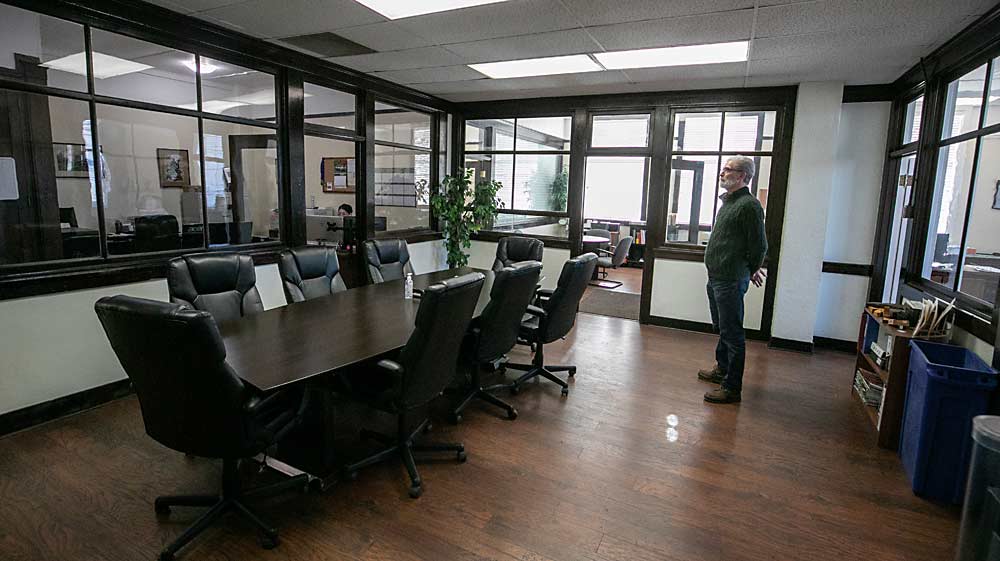
“It would be nice to preserve what’s left,” said Steven Sundquist, whose family owned Sundquist Fruit and Cold Storage on Fruit Row. “There isn’t much left except the old buildings.”
He began working for his family in the 1970s.
The buildings were designed with multiple floors and low ceilings, at a time when apples were handled in wooden boxes. When bins came around in the 1950s, the buildings allowed for maybe four high, at most. His grandfather, Ralph, kept trying to remodel by removing floors and adding bin elevators, but efficiency demands eventually caught up with them.
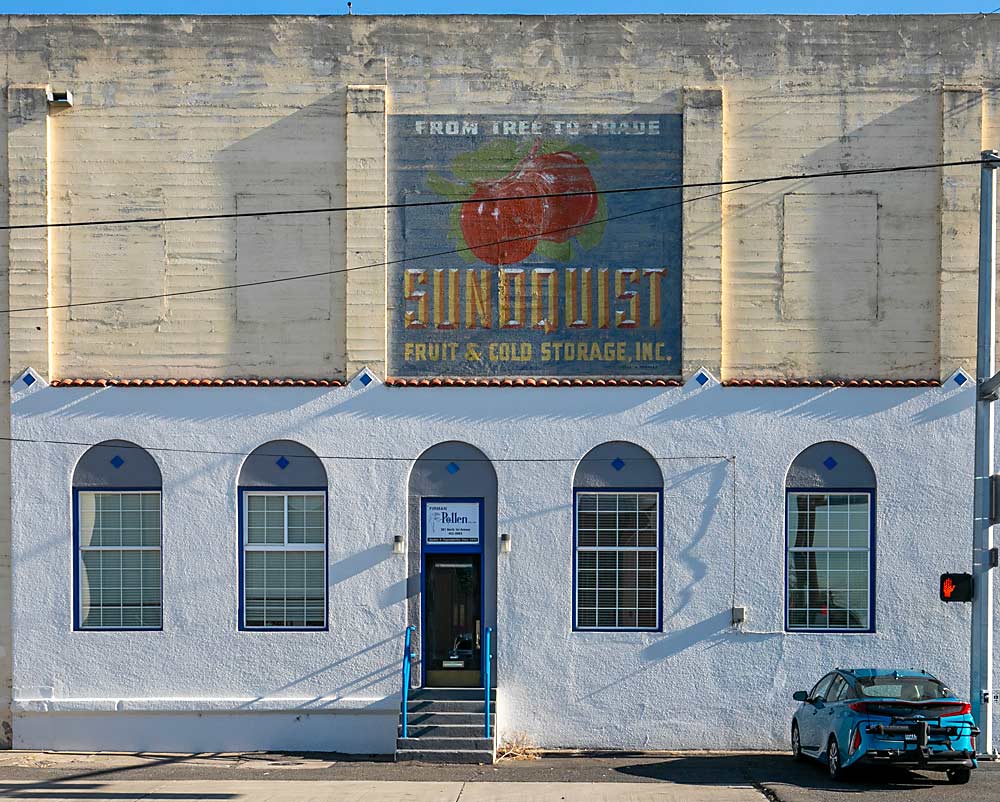
“The buildings downtown were really old and inefficient to operate,” Sundquist said.
Jack Bloxom of Washington Fruit recalls Fruit Row being home to a vinegar plant and two ice makers, with a tunnel underneath First Avenue linking two of the warehouses. The names he remembers in the district are a who’s who of the state’s fruit industry — Prentice, Rainier, Warren, Hansen, Inland Fruit, Gilbert, Yakima Fruit, Perham and Pacific Fruit.
“It was pretty competitive,” said Bloxom, one-time president of the Washington State Horticultural Association, which used to stage the industry’s annual meeting. But a spirit of cooperation existed then and still does. When fires have claimed warehouses in the state, other packers have taken up the slack.
“No one’s left hanging,” he said.
—by Ross Courtney






Well written. I enjoyed rereading this piece.